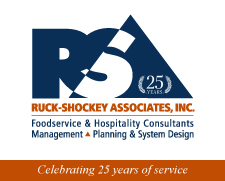
Honor Thy Kitchen
Posted on February 26th, 2024
Today’s operator has the benefit of ever-superior technology in equipment and systems that make creating exciting and nourishing menus easier than ever. Combi-ovens, Wi-Fi-enabled smart refrigerators, ventless rapid cook ovens, and all kinds of automated food processing devices make quick work of mise en place, memorializing recipes for push-button accuracy and consistency. After a moderate set-up of trial and testing, then programming, the line-level worker can execute plate after plate in the same way with no guesswork.
The downside is that tech can be delicate. Cooks tend to be decidedly indelicate. When substantial amounts of capital are invested in new smart equipment and plow horses of the past have been eliminated, downtime is crushing. Sensors, motherboards, and even high-tech gaskets are creating delays in repair due to our still sluggish supply chain. Qualified technicians are just as rare. Moreover, the workarounds, potential loss of quality and consistency, and the impact on colleague morale all negatively affect the organization. No one benefits when a critical piece of equipment is “still down”.
The remedy? Education and engagement. First, educate the team, (that’s EVERYONE) of the definition of a Capital Expenditure (Capex) and the dollar thresholds of your organization. Explain the approval process, how long it takes, and why. Explain in detail the differences between Capex, Consumables, and Disposables and why capital does not come out of the operating budget. It is imperative that the catcher on the flight machine understands that the unit costs as much as a starter home. Only then can leadership create the awareness that these assets must be protected.
True story: Senior year in culinary school. Purchasing class. Value lesson. The instructor randomly asked each of the sixteen students for a quarter. Give me a quarter, give me a quarter, give me a quarter until she got to the last student and traded the $3.75 for 4 singles (fortuitous for a college student to have any cash). She then stood at the front of the classroom, held out the bills, and torched them with her cigarette lighter without a word. The entire class lurched forward. Her lesson? “This is how the owner feels when you break a plate or overcook a steak…and you only lost a quarter.” Senseless waste. A brutal lesson that is not recommended for reenactment, yet a retelling goes an exceptionally long way to make a point in a way that everyone can relate.
Next, training. Anyone who will use or clean the equipment must be thoroughly in-serviced on it. Manufacturer’s best practices and videos are encouraged. A locally produced “how-to” video is a terrific way to make it personal and create pride in workmanship and the department. This will help foster a culture of excellence that can be contagious: “Hey, don’t slam those oven doors! We don’t do that here!”.
Stress that it is incumbent upon everyone to protect the assets of the department for the greatest performance.
Finally, be sure to provide all the tools necessary for ease of production and cleaning. Make it easy to do it right. Do your recipes include the use and care of the equipment specified? Are all your pieces on casters with quick disconnect supply lines? Are there the prescribed cleaning supplies available and have they been included in the training? Is your master cleaning schedule up to date and exact? Who manages daily overwatch to confirm accuracy? It is imperative that staff know and understand the value in their hands.
“The work is best that the boss inspects.” Col. D H Hackworth
Tools for success:
Basic fundamentals of kitchen design and preventative maintenance programming can be found here on RSA’s Learning platform:
Healthcare Foodservice Design and Equipment Fundamentals (ruckshockey.com)
Creating a template that assigns regular ownership to equipment by position is a public way to establish accountability and ownership throughout the department:
| Task | Work Order | Area | Frequency | Assigned to |
|---|---|---|---|---|
| Clean combi stack | Kitchen | Daily | ||
| Clean line reach-ins and make station | Small dish room | Daily | ||
| Change fryer, boi out and refill | Sm, dish room | Every 3 days | ||
| Seep and mope produce cooler | Sm, dish room/td> | Daily | ||
| Delime flight machine | Dish room | Weekly | ||
| Clean floor behind ice maker | Hallway | Weekly |

